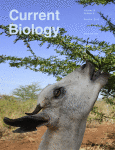AstA Signaling Functions as an Evolutionary Conserved Mechanism Timing Juvenile to Adult Transition
Curr Biol. 2019 Mar 4;29(5):813-822.e4. doi: 10.1016/j.cub.2019.01.053. Epub 2019 Feb 21.
Deveci D1, Martin FA2, Leopold P3, Romero NM4.
Author information
1. University Côte d’Azur, CNRS, Inserm, Institute of Biology Valrose, Parc Valrose, 06108 Nice, France.
2. Cajal Institute, Av Doctor Arce 37, 28002 Madrid, Spain.
3. Institut Curie, PSL Research University, CNRS UMR3215, Inserm U934, UPMC Paris-Sorbonne, 26 Rue d’Ulm, 75005 Paris, France. Electronic address: pierre.leopold@curie.fr.
4. University Côte d’Azur, CNRS, Inserm, Institute of Biology Valrose, Parc Valrose, 06108 Nice, France. Electronic address: nromero@univ-cotedazur.fr.
Abstract
The onset of sexual maturation is the result of a hormonal cascade peaking with the production of steroid hormones. In animals undergoing a program of determinate growth, sexual maturation also coincides with the attainment of adult size. The exact signals that time the onset of maturation and the mechanisms coupling growth and maturation remain elusive. Here, we show that the Drosophila neuropeptide AstA and its receptor AstAR1 act as a brain trigger for maturation and juvenile growth. We first identified AstAR1 in an RNAi-based genetic screen as a key regulator of sexual maturation. Its specific knockdown in prothoracicotropic hormone (PTTH)-producing neurons delays the onset of maturation by impairing PTTH secretion. In addition to its role in PTTH neurons, AstAR1 is required in the brain insulin-producing cells (IPCs) to promote insulin secretion and systemic growth. AstAR1 function is mediated by the AstA neuropeptide that is expressed in two bilateral neurons contacting the PTTH neurons and the IPCs. Silencing brain AstA expression delays the onset of maturation, therefore extending the growth period. However, no pupal overgrowth is observed, indicating that, in these conditions, the growth-promoting function of AstAR1 is also impaired. These data suggest that AstA/AstAR1 acts to coordinate juvenile growth with maturation. Interesting, AstA/AstAR1 is homologous to KISS/GPR54, a ligand-receptor signal required for human puberty, suggesting that an evolutionary conserved neural circuitry controls the onset of maturation.
PMID: 30799245
DOI: 10.1016/j.cub.2019.01.053

